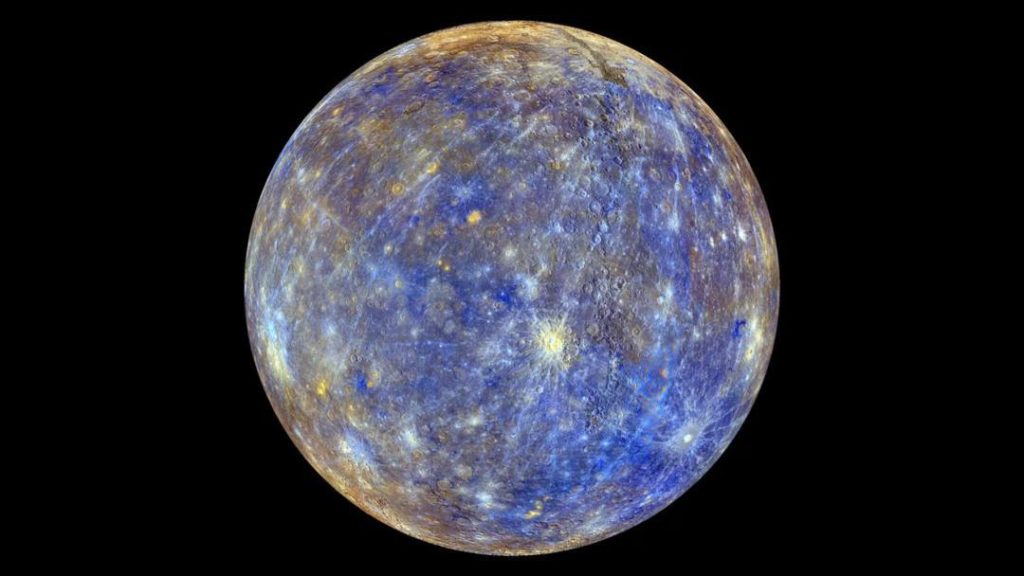
Lithium Detected in Mercury’s Exosphere: A Breakthrough Discovery
Mercury, the smallest planet in our solar system, has long been a subject of fascination for scientists. With its proximity to the sun and unique magnetic field, Mercury is a challenging environment for spacecraft to explore. Recently, a team of researchers has made a groundbreaking discovery, detecting lithium in Mercury’s exosphere, a thin layer of gases surrounding the planet. This finding has shed new light on the planet’s composition and has significant implications for our understanding of the solar system.
The Discovery
The research team, led by Daniel Schmid of the Austrian Academy of Sciences, analyzed four years of magnetic field data from NASA’s MESSENGER spacecraft. The MESSENGER (MErcury Surface, Space ENvironment, GEochemistry, and Ranging) spacecraft orbited Mercury from 2011 to 2015, providing a wealth of data about the planet’s magnetic field, geology, and atmosphere.
The team’s analysis focused on a type of electromagnetic wave signature known as “pick-up ion cyclotron waves” (ICWs). These waves are generated when charged particles in the solar wind interact with Mercury’s magnetic field. By analyzing the ICWs, the researchers were able to identify the presence of lithium in Mercury’s exosphere.
How the Discovery was Made
The discovery was made possible by the unique combination of data from the MESSENGER spacecraft and advanced analysis techniques. The team used a sophisticated computer model to simulate the interactions between the solar wind and Mercury’s magnetic field, allowing them to identify the signature of lithium in the ICWs.
“The detection of lithium in Mercury’s exosphere is a significant breakthrough,” said Daniel Schmid, lead author of the study. “It’s a testament to the power of combining cutting-edge data analysis techniques with a deep understanding of the physics of the solar system.”
What this Means for Our Understanding of Mercury
The detection of lithium in Mercury’s exosphere provides new insights into the planet’s composition and evolution. Lithium is a highly reactive element, and its presence in Mercury’s exosphere suggests that the planet’s surface is interacting with the solar wind in complex ways.
“This finding has significant implications for our understanding of Mercury’s geology and atmosphere,” said Schmid. “It suggests that the planet’s surface is more dynamic than we previously thought, with processes such as sputtering and diffusion playing a key role in shaping the exosphere.”
The discovery also has implications for our understanding of the solar system as a whole. Mercury’s exosphere is thought to be a result of the solar wind interacting with the planet’s surface, and the presence of lithium suggests that this process is more complex than previously thought.
Future Research Directions
The detection of lithium in Mercury’s exosphere opens up new avenues for research, particularly in the fields of planetary science and geophysics. Future studies will focus on further analyzing the data from the MESSENGER spacecraft, as well as planning new missions to explore Mercury’s surface and atmosphere in greater detail.
“The discovery of lithium in Mercury’s exosphere is a reminder of the many mysteries that remain to be solved in our understanding of the solar system,” said Schmid. “We are excited to continue our research and explore the many wonders of Mercury and other planets in our solar system.”
Conclusion
The detection of lithium in Mercury’s exosphere is a groundbreaking discovery that has significant implications for our understanding of the planet and the solar system. The research team’s use of advanced analysis techniques and cutting-edge data from the MESSENGER spacecraft has shed new light on the composition and evolution of Mercury.
As scientists continue to explore the mysteries of Mercury and other planets, this discovery serves as a reminder of the many wonders that remain to be discovered. With new missions and research initiatives on the horizon, we can expect to learn even more about the solar system and its many secrets.
Source:






